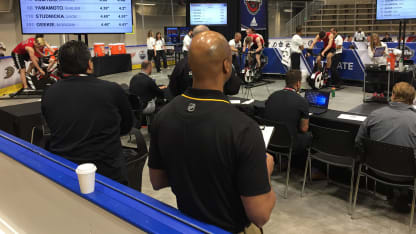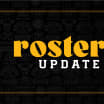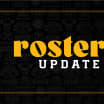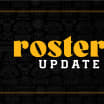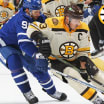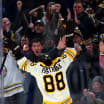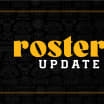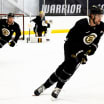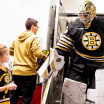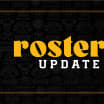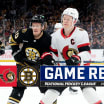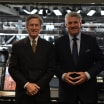"We're looking for athletes, we're looking for the individuals that can use some improvement here and there," said Bruins sports performance coach Kenny Pitts. "Many of the guys, as the numbers are showing, have a lot of potential and that's what we're looking for."
The testing includes traditional measurements of height and wingspan, as well as the bench press, pull-ups, shuttle runs, and the Wingate test, during which the prospects pedal on a bike with resistance for 30 seconds.
"We see them on the ice. The coaches and the scouts know what they're looking for, they're obviously all good players…it's the top 100 players in the world," said Bruins sports performance coach Mike Macchioni. "But it's a chance to really see what their genetic potential is, what their athleticism looks like. Sometimes they're so specific to being a hockey player that you don't see all their athleticism. Over here, we get a chance to see that.
"Guys can be super skaters, and you see them running, there are things you can work on, whether it's arm action that translate into becoming a better skater. We can kind of see those things when you get them off the ice.
"It's actually a great process."
A process that has transformed greatly over the years. Gone are the days of relying on handwritten notes and a simple eye test. Technology has taken over the Combine and allowed clubs to gain a better understanding of each prospect's athletic strengths and weaknesses.
"Night and day," Macchioni said when asked how technology has changed the event. "It used to be strictly writing things down and taking notes, now you see most of the guys are on computers and they're sending a live feed back to the organization.
"Just the combine itself, the way they can collect data, capture it, it's so streamlined now. I'm really impressed with how they handle it and it helps us a lot. You can only see so much when you're seeing it live. We can go back and really review things. It's made our job a lot more detailed."
